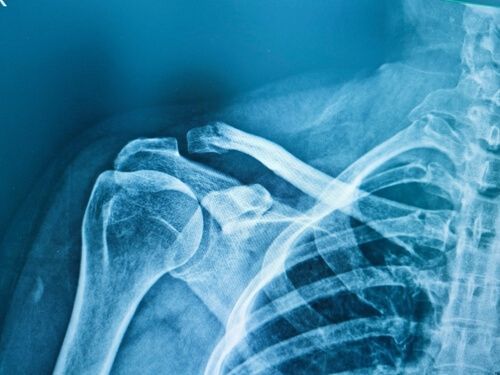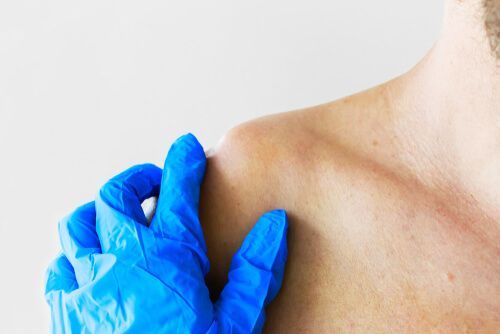Clavicle Fracture
Do you have a broken collarbone? This can be a very painful injury and must be treated properly. We are happy to provide you with more information about the causes, symptoms, and available treatments. Read on to learn more.
What is a broken collarbone?
A broken collarbone is a fracture in the shoulder joint located just below the collarbone (clavicle). It’s one of the most commonly fractured bones. A broken collarbone can occur from something as simple as a fall or a sports-related accident. In other words, accidents can happen in the blink of an eye.

What causes a broken collarbone?
A broken collarbone can happen in several ways. There isn’t just one single cause. Here’s a list of common causes:
- Trauma – This is the most common cause of a clavicle fracture.
- Sports injury – Sports such as football, rugby, and baseball can lead to a clavicle fracture.
- Osteoporosis – Individuals with this condition have a higher risk of fractures.
- Overuse – Long-term strain on the shoulder can eventually result in a fracture of the collarbone.
What are the symptoms?
A clavicle fracture can lead to several symptoms. Here’s an overview to help identify them:
- Pain – Often severe and located around the fracture site.
- Swelling – The area may swell significantly.
- Limited movement – It can be hard or even impossible to lift the arm, especially above shoulder height.
- Reduced strength – You may feel a lack of power in the affected arm.
- Bruising – Bleeding under the skin may occur, also called ecchymosis.
Please note that not everyone experiences the same symptoms. Some may have none at all, while others may suffer more intense symptoms. It's important to seek medical help as soon as possible.

How is a clavicle fracture diagnosed?
A broken collarbone is usually diagnosed by a physician through physical examination and imaging tests. These may include:
- Medical history – Your doctor will ask about your symptoms, how the injury occurred, and your general health.
- Physical examination – The doctor will examine your shoulder and arm for pain, swelling, limited motion, and deformity.
- X-ray – This is the most common imaging test and provides a clear view of the bone structure.
- CT scan – In some cases, a CT scan may be ordered to provide a more detailed image of the fracture.
- MRI – An MRI may be used to examine the soft tissues and muscles around the collarbone if needed.
Once the diagnosis is confirmed, your doctor will discuss the most suitable treatment for your situation. This depends on the severity of the fracture.
What treatments are available?
The treatment of a broken collarbone depends on the type, location, and severity of the fracture. The most common treatments include:
- Rest and immobilization – Wearing a brace or sling may be sufficient to allow the fracture to heal.
- Surgery – In more severe cases, surgery may be required, using screws, plates, or rods to fix the fracture.
- Physical therapy and rehabilitation – Once the bone is healed, strengthening exercises and therapy are crucial for full recovery.
- Pain management – Pain relief medication may be prescribed to help manage the discomfort.
Conclusion
Treating a broken collarbone requires cooperation between you, your doctor, and medical specialists. Your doctor will work with you to determine the best treatment plan for your specific condition. A clavicle brace or arm sling can be very helpful in reducing pain and supporting recovery. Feel free to contact us for more information on how these products can help you during the healing process.

- Physiotherapist
- Sports podiatrist
- Manual therapist
- Podopostural therapist
- Myofascial dry needling specialist





